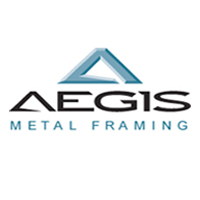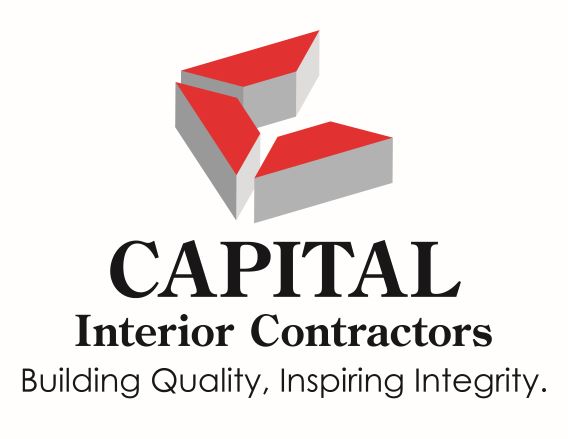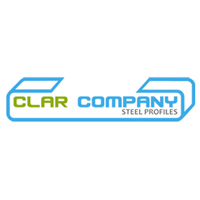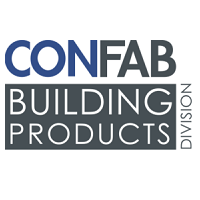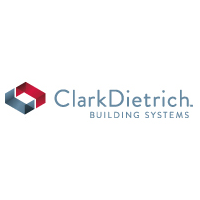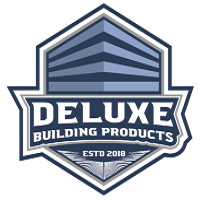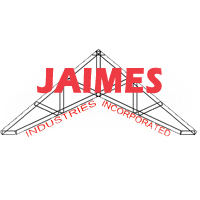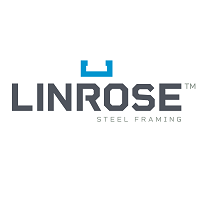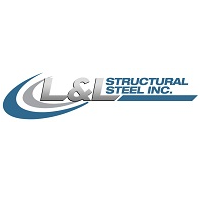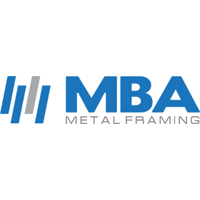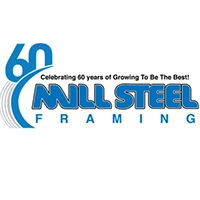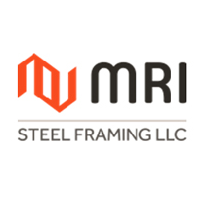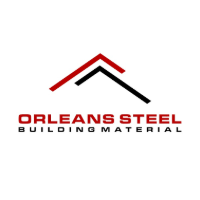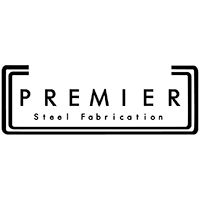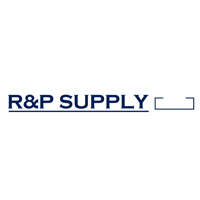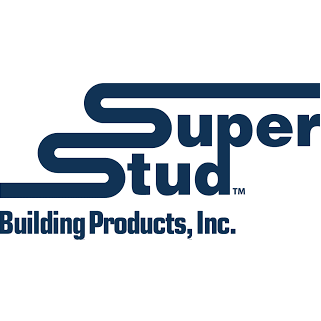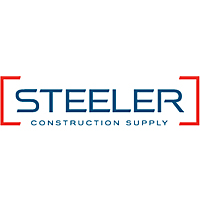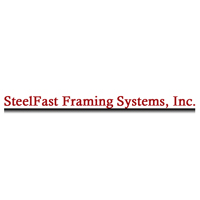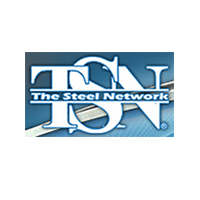|
STRONG AND RESILIENT
Cold-formed steel offers a number of material characteristics and performance attributes that enable a building to withstand the demands on a building as a result of such major events as fire, earthquakes and high wind. These characteristics include:
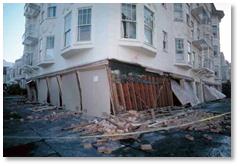 Lateral Load Resistance: Regardless of material, an important consideration in structural design is the lateral load resistance of exterior walls, or how well the wall will resist high wind and seismic forces. Structures are designed to absorb energy produced by ground movement and wind by "flexing" or “deflecting” in varying degrees, depending upon the construction materials, design of the structure, quality of construction, level of engineering, and the applicable building code requirements. Cold-formed steel is an optimal material for this purpose because it is ductile; making it more forgiving than other more brittle materials in earthquakes and high-wind conditions, and has inherent strength in uplift and gravity loading. Lateral Load Resistance: Regardless of material, an important consideration in structural design is the lateral load resistance of exterior walls, or how well the wall will resist high wind and seismic forces. Structures are designed to absorb energy produced by ground movement and wind by "flexing" or “deflecting” in varying degrees, depending upon the construction materials, design of the structure, quality of construction, level of engineering, and the applicable building code requirements. Cold-formed steel is an optimal material for this purpose because it is ductile; making it more forgiving than other more brittle materials in earthquakes and high-wind conditions, and has inherent strength in uplift and gravity loading.
Consistent Performance: Steel behaves in a highly predictable manner when subjected to the structural loads and movements imposed by high wind and seismic events. This is because steel is an inherently stable, manufactured material with consistent chemical and mechanical properties: once a steel stud has been formed, it will remain straight with virtually no change to the thickness, width or other dimensions, as well as strength and stiffness. Likewise, fasteners used to join steel framing members retain their strength and reliability over time.
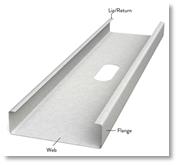 Strength-to-Weight Ratio: A key characteristic of resilient building materials is the strength-to-weight ratio. This relatively easy way to compare the merits of several different materials is determined by dividing the maximum imposed load by the weight of the material. Of all commonly used construction materials, steel has the highest strength-to-weight ratio. When cold-formed steel sheet is formed into a C-shape, like a stud, the bends act as stiffeners and increase the strength of the steel sheet dramatically, providing a strength-to-weight ratio that is up to seven times greater than that of dimensional lumber. Strength-to-Weight Ratio: A key characteristic of resilient building materials is the strength-to-weight ratio. This relatively easy way to compare the merits of several different materials is determined by dividing the maximum imposed load by the weight of the material. Of all commonly used construction materials, steel has the highest strength-to-weight ratio. When cold-formed steel sheet is formed into a C-shape, like a stud, the bends act as stiffeners and increase the strength of the steel sheet dramatically, providing a strength-to-weight ratio that is up to seven times greater than that of dimensional lumber.
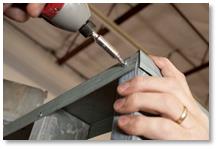 Connection Strength: Because the material and geometric properties of a steel-framing member are stable, the overall strength of the structure will depend upon the quality of connections between the studs. Steel framing typically uses screws that provide a mechanical locking connection where the load is carried in shear. This is in direct contrast to wood, where connection strength is often limited – not by the strength of the fastener, but by the resistance of the wood in bearing or withdrawal. This unique combination of material characteristics enable buildings framed with cold-formed steel to withstand some of the most devastating natural events, and even remain in service after a disaster. Connection Strength: Because the material and geometric properties of a steel-framing member are stable, the overall strength of the structure will depend upon the quality of connections between the studs. Steel framing typically uses screws that provide a mechanical locking connection where the load is carried in shear. This is in direct contrast to wood, where connection strength is often limited – not by the strength of the fastener, but by the resistance of the wood in bearing or withdrawal. This unique combination of material characteristics enable buildings framed with cold-formed steel to withstand some of the most devastating natural events, and even remain in service after a disaster.
Seismic. Earthquakes are one of the most destructive forces in nature. In recorded history, single seismic events have altered the course of major rivers, erased significant areas of land from the map and devastated structures within a considerable distance of the earthquake’s epicenter. Buildings in high-seismic zones are designed to absorb energy produced by ground movement by "flexing" or “deflecting” in varying degrees, depending upon the construction materials, design of the 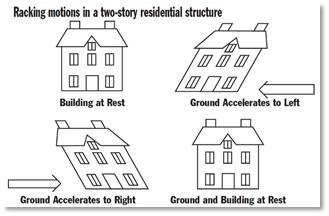 structure, quality of construction, level of engineering, and the applicable building code requirements. Cold-formed steel is the ideal material for buildings design to withstand seismic forces for two key reason: high ductility and light weight. Steel is considered a ductile material because it has the ability to bend or stretch without breaking when a force is applied. As the load is reduced, the energy is dissipated without permanent deformation or damage to the steel. On the other hand, brittle materials like concrete or masonry units will fracture and fail at their ultimate loads. The weight of a building will be heavily influenced by the structural system, and cold-formed steel is one of the lightest framing materials used in construction today. Structural damage is typically caused by “inertia”, or the reluctance of upper stories to begin moving as the ground shifts, and then conversely, to stop moving once the structure has moved. In a seismic event, the effect on a structure is similar to what players experience in the game “crack the whip.” Lighter structures have less weight available to be subjected to the stresses of inertia. structure, quality of construction, level of engineering, and the applicable building code requirements. Cold-formed steel is the ideal material for buildings design to withstand seismic forces for two key reason: high ductility and light weight. Steel is considered a ductile material because it has the ability to bend or stretch without breaking when a force is applied. As the load is reduced, the energy is dissipated without permanent deformation or damage to the steel. On the other hand, brittle materials like concrete or masonry units will fracture and fail at their ultimate loads. The weight of a building will be heavily influenced by the structural system, and cold-formed steel is one of the lightest framing materials used in construction today. Structural damage is typically caused by “inertia”, or the reluctance of upper stories to begin moving as the ground shifts, and then conversely, to stop moving once the structure has moved. In a seismic event, the effect on a structure is similar to what players experience in the game “crack the whip.” Lighter structures have less weight available to be subjected to the stresses of inertia.
Fire. The building codes recognize cold-formed steel as “non-combustible” and therefore make it eligible for use in Type I buildings where the fire-resistance standards are the most stringent. This is because cold-formed steel does not burn and will not contribute to the spread or intensity of a fire. Research has also set the melting point of steel at approximately 2700°F, which means that is will not melt in a building fire, where temperatures average 1000°F and almost never exceed 1800°F. And while the yield strength of steel is reduced at elevated temperatures, modern building codes and fire protection methods take this into account.
High Wind. A variety of windstorm types occur in different areas of the U.S., and can include hurricanes, tornadoes, straight-line winds, thunderstorms and downbursts. The one thing they all have in common is the combination of uplift, and positive and negative pressures that the building must resist. American Iron and Steel Institute (AISI) has established a set of ANSI-accredited design standards for cold-formed steel, with a prescriptive method for one and two family dwellings that addresses wind speeds up to 180 miles per hour. Cold-formed steel framed system further benefit from the inherent ductility of steel in a high wind event, helping to minimize damage due to building movements. In addition, screw fasteners used in cold-formed steel construction tend to provide better connections and more secure continuous load paths than typical nailing patterns.
Flood. When materials are underwater for any length of time, many are not salvageable after the waters recede. This often makes the building uninhabitable. Where it is not possible to elevate susceptible materials above the local flood elevation, the use of products that will not absorb and retain moisture are key to ensuring the survival of the building during and after the event. In velocity zones where break-away construction is necessary to relieve pressure on a structure, cold-formed steel also is an effective option for wall designs.
|
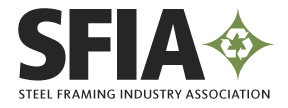
 Lateral Load Resistance: Regardless of material, an important consideration in structural design is the lateral load resistance of exterior walls, or how well the wall will resist high wind and seismic forces. Structures are designed to absorb energy produced by ground movement and wind by "flexing" or “deflecting” in varying degrees, depending upon the construction materials, design of the structure, quality of construction, level of engineering, and the applicable building code requirements. Cold-formed steel is an optimal material for this purpose because it is ductile; making it more forgiving than other more brittle materials in earthquakes and high-wind conditions, and has inherent strength in uplift and gravity loading.
Lateral Load Resistance: Regardless of material, an important consideration in structural design is the lateral load resistance of exterior walls, or how well the wall will resist high wind and seismic forces. Structures are designed to absorb energy produced by ground movement and wind by "flexing" or “deflecting” in varying degrees, depending upon the construction materials, design of the structure, quality of construction, level of engineering, and the applicable building code requirements. Cold-formed steel is an optimal material for this purpose because it is ductile; making it more forgiving than other more brittle materials in earthquakes and high-wind conditions, and has inherent strength in uplift and gravity loading. Strength-to-Weight Ratio: A key characteristic of resilient building materials is the strength-to-weight ratio. This relatively easy way to compare the merits of several different materials is determined by dividing the maximum imposed load by the weight of the material. Of all commonly used construction materials, steel has the highest strength-to-weight ratio. When cold-formed steel sheet is formed into a C-shape, like a stud, the bends act as stiffeners and increase the strength of the steel sheet dramatically, providing a strength-to-weight ratio that is up to seven times greater than that of dimensional lumber.
Strength-to-Weight Ratio: A key characteristic of resilient building materials is the strength-to-weight ratio. This relatively easy way to compare the merits of several different materials is determined by dividing the maximum imposed load by the weight of the material. Of all commonly used construction materials, steel has the highest strength-to-weight ratio. When cold-formed steel sheet is formed into a C-shape, like a stud, the bends act as stiffeners and increase the strength of the steel sheet dramatically, providing a strength-to-weight ratio that is up to seven times greater than that of dimensional lumber.  Connection Strength: Because the material and geometric properties of a steel-framing member are stable, the overall strength of the structure will depend upon the quality of connections between the studs. Steel framing typically uses screws that provide a mechanical locking connection where the load is carried in shear. This is in direct contrast to wood, where connection strength is often limited – not by the strength of the fastener, but by the resistance of the wood in bearing or withdrawal. This unique combination of material characteristics enable buildings framed with cold-formed steel to withstand some of the most devastating natural events, and even remain in service after a disaster.
Connection Strength: Because the material and geometric properties of a steel-framing member are stable, the overall strength of the structure will depend upon the quality of connections between the studs. Steel framing typically uses screws that provide a mechanical locking connection where the load is carried in shear. This is in direct contrast to wood, where connection strength is often limited – not by the strength of the fastener, but by the resistance of the wood in bearing or withdrawal. This unique combination of material characteristics enable buildings framed with cold-formed steel to withstand some of the most devastating natural events, and even remain in service after a disaster.  structure, quality of construction, level of engineering, and the applicable building code requirements. Cold-formed steel is the ideal material for buildings design to withstand seismic forces for two key reason: high ductility and light weight. Steel is considered a ductile material because it has the ability to bend or stretch without breaking when a force is applied. As the load is reduced, the energy is dissipated without permanent deformation or damage to the steel. On the other hand, brittle materials like concrete or masonry units will fracture and fail at their ultimate loads. The weight of a building will be heavily influenced by the structural system, and cold-formed steel is one of the lightest framing materials used in construction today. Structural damage is typically caused by “inertia”, or the reluctance of upper stories to begin moving as the ground shifts, and then conversely, to stop moving once the structure has moved. In a seismic event, the effect on a structure is similar to what players experience in the game “crack the whip.” Lighter structures have less weight available to be subjected to the stresses of inertia.
structure, quality of construction, level of engineering, and the applicable building code requirements. Cold-formed steel is the ideal material for buildings design to withstand seismic forces for two key reason: high ductility and light weight. Steel is considered a ductile material because it has the ability to bend or stretch without breaking when a force is applied. As the load is reduced, the energy is dissipated without permanent deformation or damage to the steel. On the other hand, brittle materials like concrete or masonry units will fracture and fail at their ultimate loads. The weight of a building will be heavily influenced by the structural system, and cold-formed steel is one of the lightest framing materials used in construction today. Structural damage is typically caused by “inertia”, or the reluctance of upper stories to begin moving as the ground shifts, and then conversely, to stop moving once the structure has moved. In a seismic event, the effect on a structure is similar to what players experience in the game “crack the whip.” Lighter structures have less weight available to be subjected to the stresses of inertia.